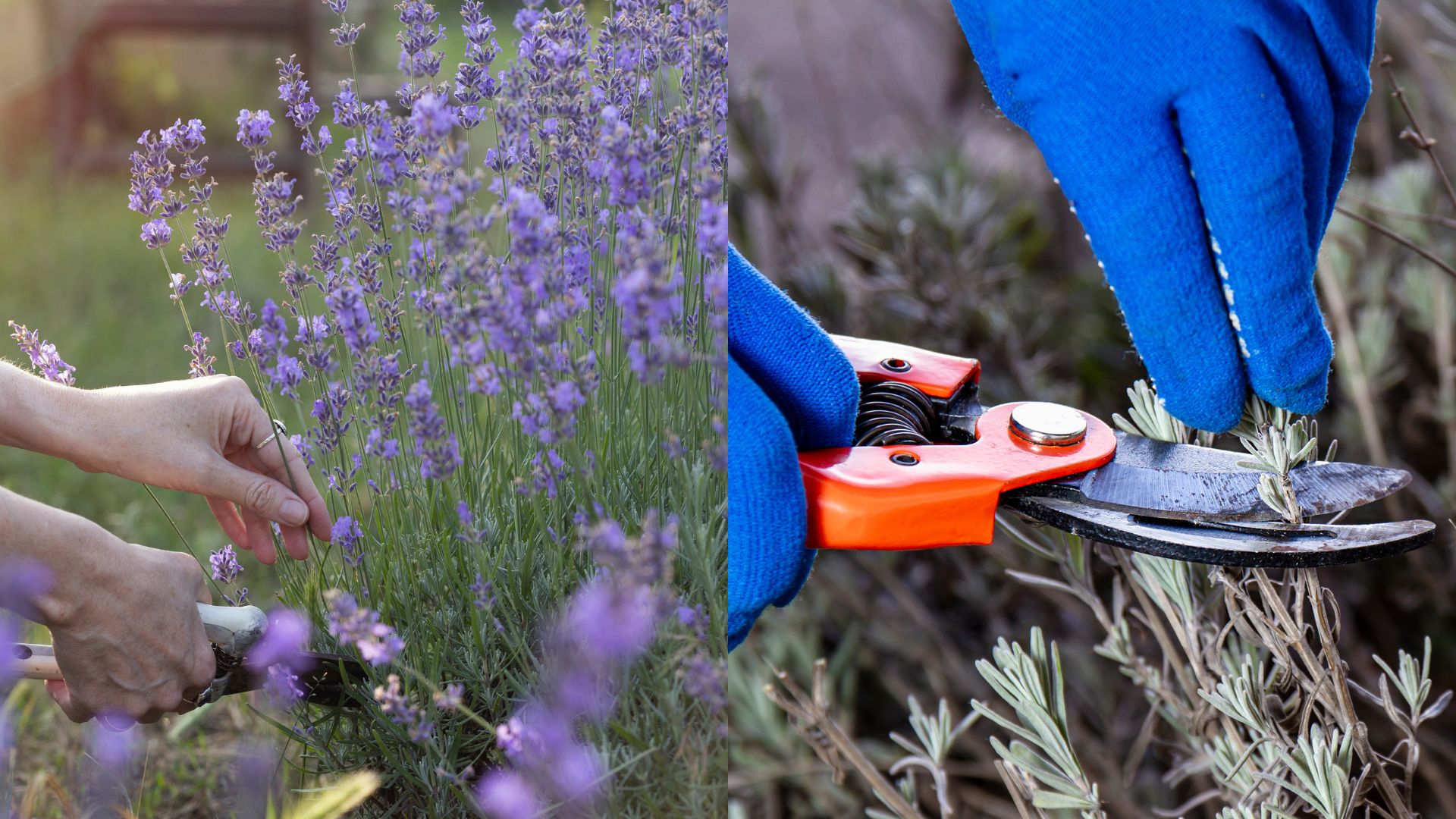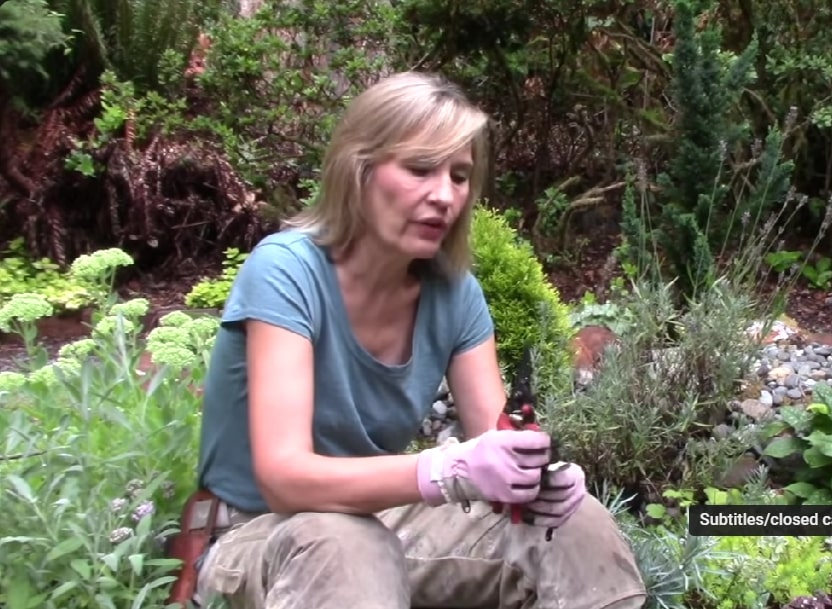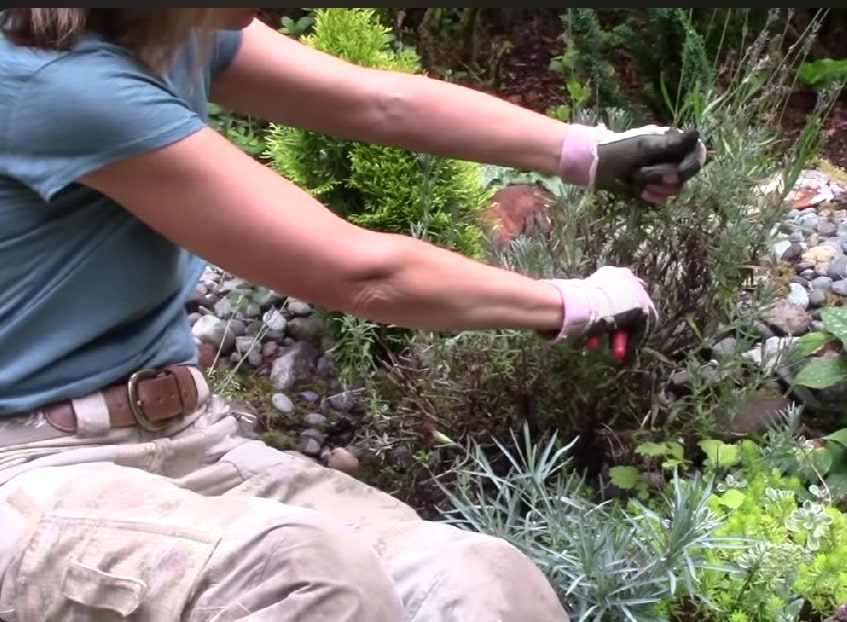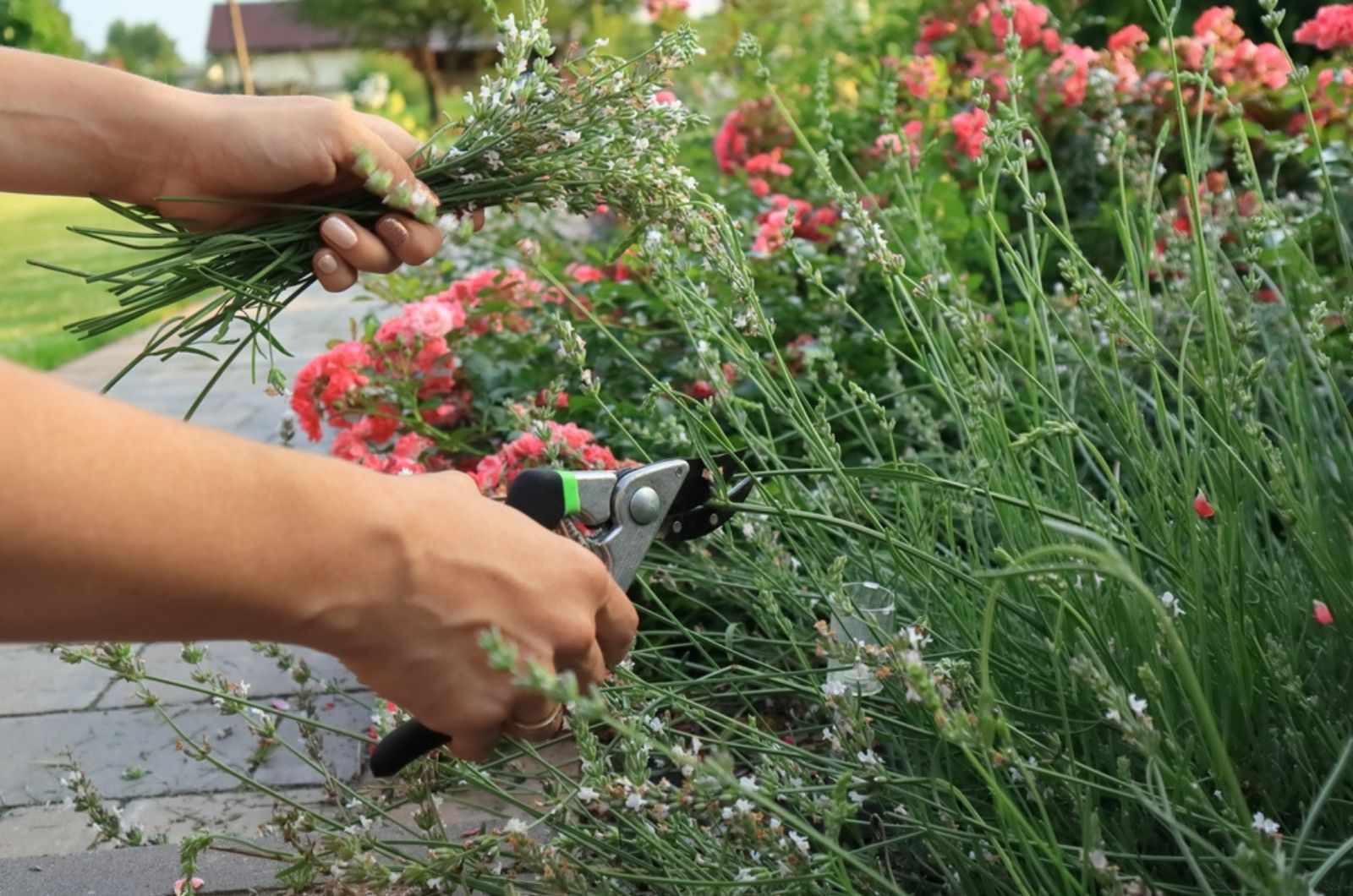The secret to growing breathtaking lavender is pruning. If you want them to live as long as they can and flower more abundantly year after year, you shouldn’t forget to trim them.
They turn woody if you don’t, which affects their blooming.
But what’s the best time to prune lavender bushes? Is it in spring or some time later in the season?
I’ll discuss all the things you need to know (with the help of an expert horticulturist) about pruning lavender and keeping them healthy and thriving for years to come.
Let’s get started.
When To Prune Lavender
Growing lavender is rather easy, although you will have to prune it to prevent it from turning woody and flowerless.
But what’s the best time to do it?
Marianne Binetti, a horticulturist and book author, advises pruning these shrubs twice a year, once in the spring when the new growth comes out just to shorten them. And then the pruning I’m going to show you is the mid-summer pruning.
It is crucial not to prune this plant in fall, right before winter. It will produce new growth which would get damaged by winter frosts, hurting your entire plant.
If you live in regions with warm winters, you could do it, but otherwise, stay away from fall pruning.
Generally, fall pruning is all about keeping your plant under control, and you can do that in spring when there’s no more danger of frost damaging the young stems. Just like Benetti says, prune the plant just to shorten it and give it a nice round shape.
The key is to remove around 1/3 of the entire growth so that it doesn’t get difficult for your plant to recover.
Furthermore, if you don’t know when exactly you should prune your lavender in mid-summer, look at the blossoms. Once they start fading, you can trim your plant and it will give you another flush of flowers before winter.
And the trick is, you don’t just cut off the blooms and the skinny stems. You need to prune all the way down into the woody stems, says Binetti.
Gardeners generally don’t advise pruning woody stems, but if you have an old lavender plant with little green growth (like Binetti’s in the video), then you can cut into some woody stems just to revive them.
Once you prune down by half into this woody dead stuff, you’re going to stimulate new growth to come, maintains the horticulturist.
But if you’re new to gardening and lavender pruning, I wouldn’t touch the woody stems. Make sure to leave about 2-3 inches of green growth and you’re bound to get a new flush of blossoms in no time.
And finally, it’s best not to prune your lavender when temperatures are 80°F. In these cases, trim your plants in the evening or on an overcast day so that they go through less shock.
Warning: Excessive pruning of woody stems could kill your plants, so I wouldn’t do it unless the plant is almost entirely like this and barely flowers.
And here you can find full pruning advice and tips on how to use lavender afterwards:
After-Prune Care
Once you’re done with pruning, you should pay special attention to your lavender. Give your shrub extra water during the following days, so that it can recover more quickly.
You can mulch it (if you didn’t do it already) so that it maintains more moisture and that its surroundings look more appealing.
When Should You Deadhead Lavender
You can always deadhead the flowers or try a mid-summer prune and see how gorgeous your plant looks in the fall.
Just like with any other flowering plant out there, you can deadhead the spent flowers whenever you notice they have lost their allure and started to fade and turn brown.
Or instead of having to deadhead, you can harvest and use lavender before its flower stalks start to lose their grace.
It makes an excellent addition to bouquets and flower arrangements or you can hang it, dry it out, and use it for your dry-flower projects.
Whatever you decide to do, just make sure to always use clean gardening scissors so that you don’t transfer some disease onto your plant.




